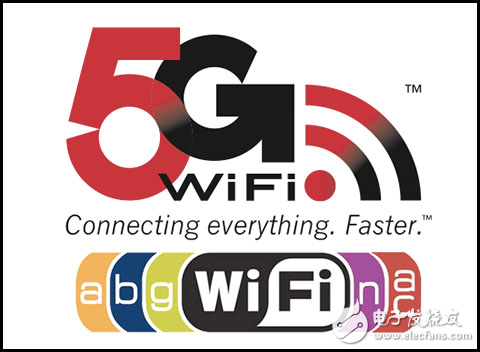In the era of smart device blowouts, wireless routers have become the most important electrical devices in the home. Stability, connection speed, and signal strength are all important components of the wireless routing experience. How to choose and configure a router to get the best user experience? When you buy a wireless router, will it be confused by dazzling parameters? Let us take you through the fog, understand the nature behind the router parameters, and choose the router that suits you. 2.4G or 5G? 2.4G and 5G refer to the transmission frequency of the wireless router, respectively. Among them, the 2.4GHz frequency is the most widely used, and is supported by almost all computers and smartphone devices. However, just because it is too common, when we turn on the computer wireless network card, we will see the strange Wi-Fi names of the neighbors. Observing with special software, we will find that their frequency bands are seriously overlapping. The Bluetooth and wireless mouse transmitters we use today, and even microwave ovens, use the 2.4G band. The problem with this is that severe interference will cause the data transfer rate to slow down. 5G Wi-Fi is born to avoid mutual interference problems, because this frequency is currently used less. At present, except for some flagship mobile phones, most low-end and mid-range phones only support 2.4G. At the same time, routers that support 2.4G and 5G frequencies are more expensive than routers that only support 2.4G single-frequency. There are not many people currently using them. For example, just like a new highway, because there are fewer vehicles on the road, there is no obstacle, and another 2.4G "old road" has long been congested. The higher carrier frequency also allows 5G Wi-Fi to carry higher transmission rates, which is the 802.11ac we will discuss later. Of course, 5G is not without its shortcomings. Its biggest problem is the poor ability to penetrate the wall. The signal attenuation of the 5G signal after a load-bearing wall is very obvious, because the electromagnetic waves with higher frequency are more capable of penetration and diffraction. weak. Therefore, it is recommended to purchase a wireless router that supports dual-band as much as possible. You can use 5G as much as possible with 5G. It is recommended to use 2.4G for areas where the signal cannot be covered. Is 802.11n still 802.11ac? 802.11n is a wireless standard proposed in 2009. Mobile devices have developed rapidly in the past six years, and notebooks have used wireless transmission data more widely. The original single-channel 150Mbps transmission rate has not been able to meet the requirements. In 2014, the IEEE finally introduced the 802.11ac standard, which supports a transmission rate of 866 Mbps per channel, and also supports 8 MIMO (multiple input and multiple output) - which can be understood as the highest theoretical speed of 8 & TImes; 866 Mbps. If we use an 802.11n network and use a router with 3 antennas, then the theoretical speed is only 450Mbps. Considering factors such as attenuation and interference, streaming 1080p video is very difficult, and there will be a stutter phenomenon during the viewing process. With 802.11ac, the wireless theoretical speed can reach more than Gigabit, and the 5G frequency band is weakly interfered, and the streaming HD video is completely stress-free. It is worth mentioning that Apple's Macbook Air launched in 2013 is the first laptop to support 802.11ac annotation. Since then, not only have computer manufacturers started to use the standard, mobile phone manufacturers have joined the ranks, and HTC One was released in 2013. Nokia Lumia 1520 and Samsung Galaxy S4 both have built-in support for 802.11ac. This year's flagship machines launched by major mainstream manufacturers have basically supported the standard. Apple iPad Air 2 and iPhone 6/6 Plus have also joined the ranks. Notebook manufacturers are also happy to embrace 802.11ac. It is expected that this standard will be rapidly popularized. When you are choosing a router, don't be scared by these strange numbers and combinations of letters. Remember: 802.11ac is faster. If you need to stream video from your tablet or mobile phone to your smart TV, or if you need to transfer data over a local area network, then choose 802.11ac, provided you have the The device needs to support it. Metal Rack series include all types of metal rack which are mainly for canopy support and moving. Metal Rack Metal Rack,Mobile Metal Frame,Portable Metal Rack,Collapsible Metal Rack Foshan Dinghan Electrical Technology Co., Ltd , https://www.dinghanelectrical.com

